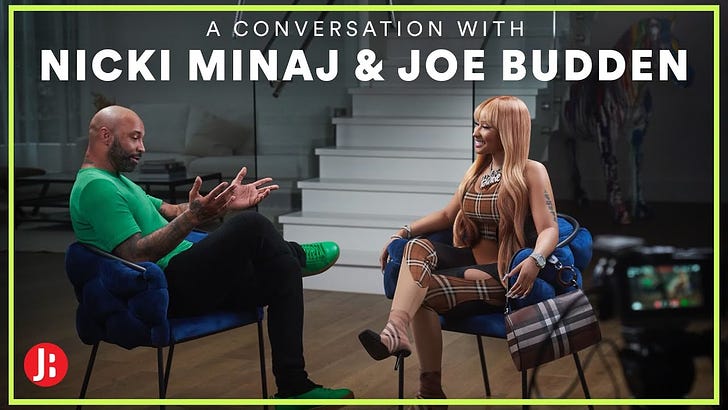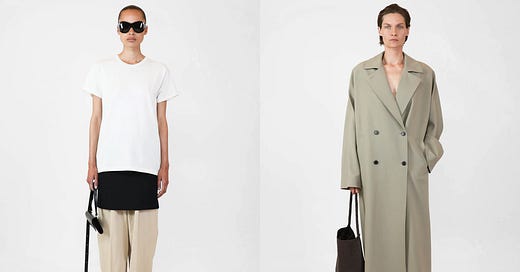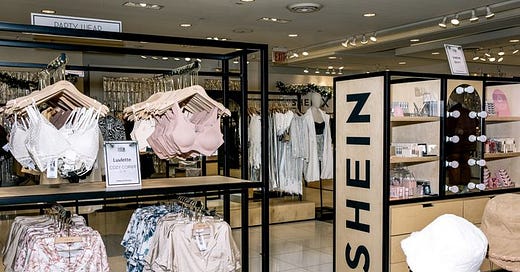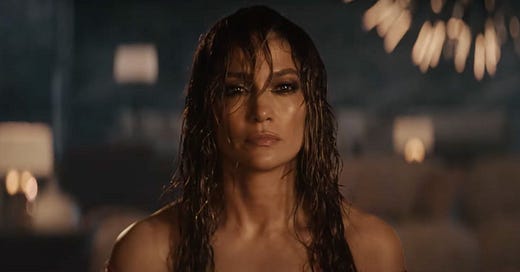

Discover more from Back Row
Nicki Minaj Criticizes Vogue, But Not Anna Wintour
Despite her fashion influence, she’s never been on the cover of American Vogue.
Thank you for subscribing to Back Row! If you like these posts, tap the heart up top and tell your friends about it. Today’s article includes exclusive reporting for my book ANNA: The Biography, out May 3, which draws on interviews with more than 250 people, including Anna’s close friends and colleagues. You can support this newsletter, which is available to read entirely for free, by preordering the book on Amazon or wherever you like to buy your books. If you are new here, don’t forget to subscribe.
Nicki Minaj wondered in a recent interview why she has never been featured on the cover of American Vogue despite her influence in fashion and culture. In a wide-ranging conversation with Joe Budden for his podcast, Minaj talked broadly about her fashion world influence.
…[E]veryone knew me for wearing the pink wig, right? You would think that right now – hip hop is the biggest, most influential genre in the world, right? You would think the biggest female rapper of all time… who has set so many trends, would have been on the cover of American Vogue, but she hasn’t. Now listen to this – when Billie Eilish comes out and she sets a trend with her green hair, she’s immediately put on American Vogue. But when a black female rapper who has been setting the trend for ten years does it, no one says anything.
She added that when she did pose for magazine covers, she was asked not to wear pink hair: “But I would see Katy Perry on the cover with pink hair, and I would see Lady Gaga on the cover with pink hair… but whenever it was time to be represented on certain covers or in fashion it was, no, no – we need you stripped down.” (Gaga wore pink hair on the March 2011 cover of Vogue; Minaj has appeared on covers for Teen Vogue and international editions of Vogue.)
When I was reporting ANNA: The Biography, I came across a story about when Minaj was featured in a two-page piece in the March 2012 issue of Vogue, pegged to the release of her album Pink Friday: Roman Reloaded. Someone who worked at Vogue at the time said that at first when the images from the shoot came back, some were relieved that a Black woman was going to appear in Vogue. But this person was then dismayed to see that in the photo the magazine published, shot by Steven Klein, Minaj appeared with blue skin (her hair was its signature pink). During this period, the magazine was lacking diversity, and this person thought, Why wouldn’t you just run her as she is? A typical argument at the time for the magazine making such a choice might have been, “We wanted it to be surreal.” However, this was a two-page story with one image of Minaj rather than a multi-page editorial. Whenever this person spoke up with concerns, including about how women of color were portrayed in the magazine, these were dismissed by more senior Vogue staff.
It was unclear who had the idea to make Minaj’s skin look blue in that photo. Anna had a habit of communicating with some senior staff who were close to her, but seldom with lower ranking employees. She’s known for working quickly and acting decisively, and is not someone who likes to explain her thinking. She’s also not someone whom her staff often feel comfortable challenging. But she does review every single image in every single issue and would have signed off on that photo of Minaj.
The article, meanwhile, acknowledged Minaj’s impact on fashion and music:
The performer is famous for her Harajuku Barbie appearance, a mélange of tiny skirts, bustiers, and leggings in a riot of cartoon hues, invariably topped with a towering pastel wig and Miss Piggy eyelashes. This highly mannered, instantly recognizable look stands in contradiction to the feminist content of many of her lyrics, such as “I’m fightin’ for the girls that never thought they could win,” from “I’m the Best.” But the unlikely combination of cotton-candy style and bold (sometimes frankly obscene) substance has proved a source of fascination and adulation.
In an astonishingly short period of time, Minaj has been nominated for three Grammy Awards (Best New Artist, Best Rap Album, and Best Rap Performance), named the 2011 Rising Star by Billboard magazine, and garnered Favorite Rap/Hip-Hop Album honors at the American Music Awards for her 2010 debut, Pink Friday.
The March 2012 cover went to another music superstar, Adele. (November 2010, the month that Minaj’s album Pink Friday came out, the magazine’s cover went to Anne Hathaway.) Of course, cover decisions also stopped with Anna, who went to many of the major fashion shows that Minaj was attending to great excitement at the time. In fact, they sat next to each other on the front rows of the Carolina Herrera and Oscar de la Renta shows in September of 2011.
Others I interviewed for my book described Anna as being guided by instinct when it came to cover decisions — and part of that instinct, particularly in the aughts, was to prioritize movie actresses for covers. Television and music stars appeared on covers much less frequently. Having a reality television star, like Kim Kardashian, who appeared on the April 2014 cover alongside Kanye West, pegged to their wedding, would have been unheard of a decade earlier.
In the interview with Budden, Minaj noted that it was only after she released the single “Chun-Li” with the lyric “Fendi prints on” that she collaborated with Fendi on a line:
When I did my Fendi line, I went to Italy and spoke to Sylvia [Fendi] and the company, and she showed me the grid of how their clothes went up once my line came out. And she said that prior to my clothing line coming out, they were not doing really well with the clothes that had the actual Fendi prints on, that everybody wanted to get away from the Fendi print. And I wanted to run to the Fendi print, and “Chun-Li” said “Fendi prints on,” and that changed everything.
Yet neither the Fendi line nor “Chun-Li” nor her 2018 album Queen led to a Vogue cover for Minaj, who noted Lil’ Kim also should have gotten one. Anna sometimes has other reasons for whom she lends Vogue’s seal of approval in the form of coverage or Met Gala invites. She has, for instance, decided not to cover a celebrity because she didn’t approve of their behavior at the Gala.
Minaj appeared on the inside pages of Vogue again in the March 2018 issue. She attended Met the Gala in 2013, 2016, 2017, 2018, and 2019. (Last year, Minaj tweeted that she wouldn’t attend the Met Gala because of the event’s vaccine requirement.)

Though Vogue has become notably more diverse in recent years – which wouldn’t have happened without Anna’s decision-making – Minaj has long been in a position of seemingly half-hearted Vogue approval. “Every time I’ve ever met Anna Wintour, she’s been so gracious to me,” Minaj told Budden. “I don’t expect Anna Wintour to know everything that’s going on with every rapper in the game. I’m talking to the people around Anna Wintour.”
However, as I discuss in the book, even those people – like the former employee who wondered why Minaj’s skin was blue in the March 2012 issue – haven’t been able to alter some of Anna’s most impactful decisions.
A female rapper didn’t appear on the cover of Vogue until Cardi B was photographed for the January 2020 issue along with her baby Kulture.


Her cover was one of four for the month; the others featured Ashley Graham, Stella McCartney, and Greta Gerwig.
Don’t forget to subscribe to support independent fashion journalism and get posts like this sent to your inbox about twice a week.











Nicki deserves a Vogue cover more than any other female rapper. It’s a pity that Cardi has been on it and Nicki hasn’t. While, at the same time, they’re giving covers to random people or people who haven’t done anything really exciting or have so much to share. Nicki’s very knowledgeable. I feel that Vogue’s been missing out on a lot lately, despite trying to hit so hard.
Nicki Minaj should have been on the cover of Vogue given all of the time she put into making them appear relevant.